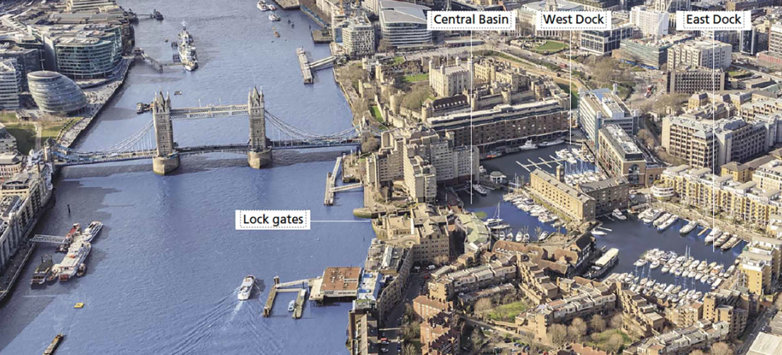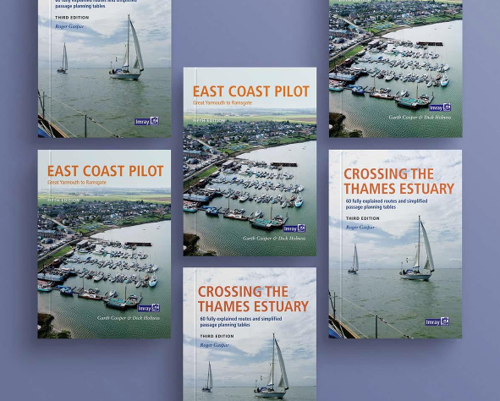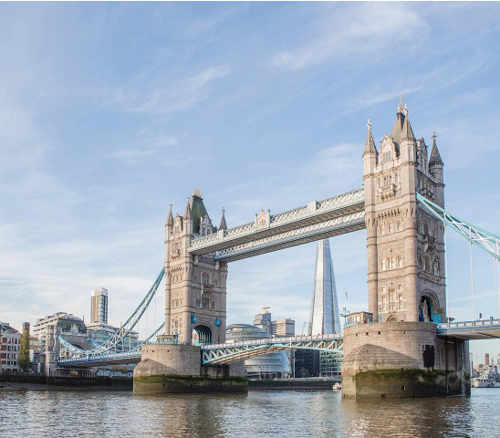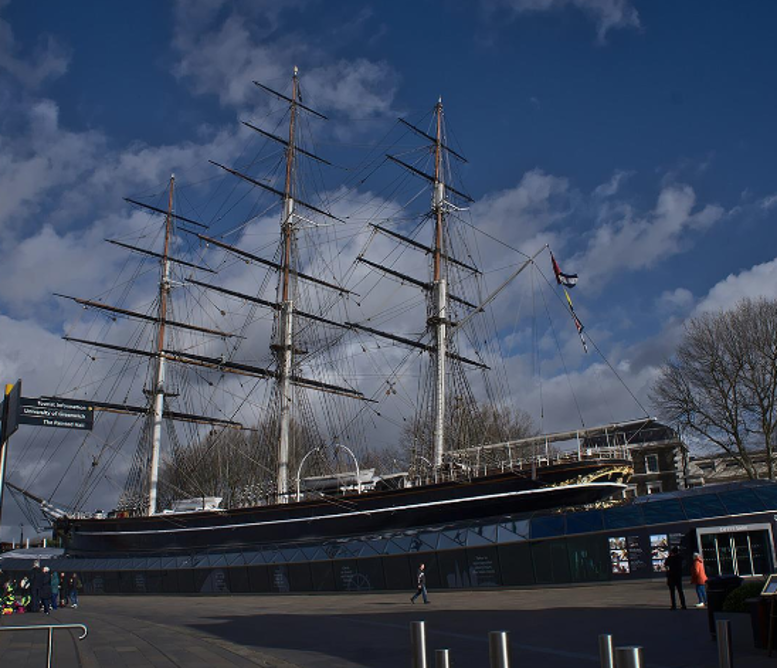Sailing the River Thames
The Thames is undoubtedly Britain’s most famous river and sailing it can add an unforgettable experience to your logbook.
The Thames is undoubtedly Britain’s most famous river, known around the world for the iconic landmarks of Big Ben, the London Eye and Houses of Parliament. Whilst many of us don’t associate England’s capital with sailing, the Thames can in fact be navigated by masted craft all the way up to Tower Bridge, an unforgettable experience to add to your logbook.
Remarkably, the adventure doesn’t stop there; a quirk in the law since 1894 states that the bridge should never impede navigation in the river, so it’s completely free of charge to pass through. If you have ever transited Weymouth’s historic lifting bridge in Dorset, motoring beneath the revered Tower Bridge must surely take that same feeling of awe to a whole other level. For more details go to towerbridge.org.uk
However, at some point you will reach a bridge you can’t pass under - unless you’re in a motor-cruiser or one those rare designs like Pete Goss’ Oddity that can easily be unstepped without outside assistance. If you do enjoy that kind of versatility in your boat, it is possible to ride the tide all the way up to Teddington, 50 miles inland. Pushing on even further, a series of locks will give you access deep into the heart of the English countryside, meandering past majestic wonders like Kew Gardens and Windsor Castle.
It feels almost unnatural that sea-going boats can get that far inland, but they can. On a recent paddleboarding excursion in Richmond I drifted past a ‘Menorquin’ motorboat, a common design where my catamaran Luna is moored in Catalonia. It’s the first time I’ve seen one outside the Mediterranean and it took me by surprise, showing just how connected the upper reaches of the tidal Thames is for the right boat.

For sailing boats that lack lifting keels or easily unstepped masts, the river is still well worth a visit for someone looking for a different kind of adventure on the south coast. As long as you follow the step-by-step instructions in the East Coast Pilot it is a straightforward passage up to Greenwich. Alongside Portsmouth, Plymouth and Falmouth, this is arguably one of Britain’s most esteemed maritime destinations, the place from where heroes such as Cook and Nelson set off on epic voyages to far flung corners of the world.
This following passage is an extract from the East Coast Pilot, sharing five tips for planning your passage into the Thames and explain how to reach the Greenwich Yacht Club.
1. Will you have enough time?
The tides run strongly in the river, reaching 4kn in places at springs, and if you want to run the whole way to St Katharine’s in one ‘hit’, the 40M can be readily achieved with a boat speed of 4-5kn – HW London Bridge is about 1hr later than at Sheerness. Conversely, the trip down river gives only about 5hr of fair tide. However, the combination of the tide plus 5kn of boat speed should still see you off the Medway by LW if you set off downstream from Tower Bridge at HW-1 (London Bridge). With the need to depart upstream at LW, the Queenborough moorings and Stangate Creek anchorage are ideal spots to wait for the tide. A good time to leave Queenborough is 1-1.5hr before LW Sheerness. A possible alternative point of departure is Holehaven on the western edge of Canvey Island. It’s 8M upriver from the Nore Swatch and that allows a later start – check the charted depths at the creek entrance, though, to ensure you can leave when required.
2. Will the Thames Barrier be open?
The Thames Barrier is closed regularly for testing, as well as in times of flood risk, and the Barrier Duty Officer should be contacted when planning the river passage to ensure closure is not planned for the day of your trip. Test closure dates are published in advance by the Port of London Authority (PLA) and can also be accessed via the ‘Thames Updates’ page at www.eastcoastpilot.com. When the Barrier is closed, other flood gates are closed too, for instance sealing off Embankment Marina (Gravesend).
3. Which side of the river should you use?
It is a PLA requirement that the first part of your upstream journey has to be made along the S shore to stay clear of the commercial installations at Canvey, Coryton and the London Gateway Container Terminal, and well south of the buoyed Yantlet Channel and outbound Yantlet Secondary Channel. Note that you may encounter ships coming downstream in this Secondary Channel, which means they will be S of the buoyed main channel! Despite this widely known requirement, the authors have frequently seen skippers of leisure craft not bcomplying with it. Skirt the shallows on the south side, stay out of trouble and stay safe. If leaving from Holehaven, cross immediately to the S side when safe to do so. If inbound from NE, cross to the S side of the estuary from W Leigh Middle SHB (Q.G) heading SW towards E Blyth NCB (Q), as shown on charts. Further up, in Lower Hope Reach, resume the starboard side of the river and stay to starboard for the rest of your journey upstream. Outbound, it is again a PLA requirement to stay on the S shore throughout, crossing NE, if necessary, only between the pairs of Sea Reach Nos.4 and 5 buoys. This crossing point is also clearly charted.
4. Have you got enough fuel?
It should be noted that there is only one location on the Thames between the Estuary and Tower Bridge where you can readily take on fuel alongside through a hose and that is at the fuel barge just downstream from St Katharine Docks. There is no fuel available at Queenborough. The nearest in the Medway is at Gillingham.
5. Have you booked a berth?
Note that visitors are generally only accepted at the five London marinas – Gallions Point, West India, South Dock, Limehouse, and St Katharine’s – if they have booked a berth in advance. The marinas are usually busy and often full, especially in high season. You may be asked to show proof of third-party insurance on arrival. Incidentally, you may well be visited by the police making routine security checks at any London marina, if not on the river itself.
If you have made it as far as Greenwich, it would be a travesty not to moor alongside the historic buildings and follow the wake of those past explorers. Within the Royal Museums Greenwich complex there are three highlights to choose from - the Cutty Sark down by the river, the National Maritime Museum halfway up the hill and the Observatory at the top. For ocean navigators the observatory is undoubtedly sacred ground, home to the Prime Meridian Line and the place where the world’s greatest minds came together to solve the thorny subject of how to work out longitude at sea. While latitude was conquered thousands of years ago thanks to simple techniques measuring the altitude of stars and the sun, the complexity of finding your position east or west was not solved until just a few centuries ago.
If you have made it as far as Greenwich, it would be a travesty not to moor alongside the historic buildings and follow the wake of those past explorers. Within the Royal Museums Greenwich complex there are three highlights to choose from - the Cutty Sark down by the river, the National Maritime Museum halfway up the hill and the Observatory at the top. For ocean navigators the observatory is undoubtedly sacred ground, home to the Prime Meridian Line and the place where the world’s greatest minds came together to solve the thorny subject of how to work out longitude at sea. While latitude was conquered thousands of years ago thanks to simple techniques measuring the altitude of stars and the sun, the complexity of finding your position east or west was not solved until just a few centuries ago.
The challenge for longitude came with accurately measuring time at sea, a problem finally overcome by the eighteenth-century clockmaker John Harrison with his infamous H1 chronometer. You can learn all about it at the Observatory. But bear in mind that while you could easily pass away the days wandering the walkways of Royal Museums Greenwich, studying the beautiful boat models and paintings, East Coast Pilot warns that the pier at Greenwich can get a little bouncy at times.
If you want to stay in London longer, the best option is to find total shelter by heading further upstream to St Katharine Docks, the last refuge before Tower Bridge. From there you can enjoy the delights of London, ticking off maritime highlights including HMS Belfast, the Little Ship Club, the Golden Hinde and more. Our capital city may be a long way from the sea, but its heritage of seafaring flows strong if you know where to look.



